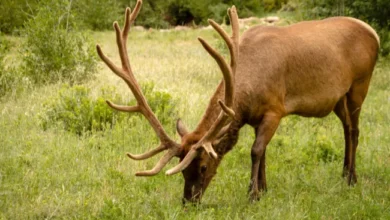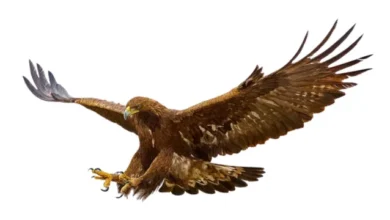
When you hear the phrase “Snowy Owl the Arctic Hunter,” what comes to mind? Maybe it’s the image of a majestic white owl gliding silently over the frozen tundra, or perhaps you’re curious about how such a striking bird survives in one of the world’s harshest climates. The snowy owl (Bubo scandiacus), also known as the Arctic owl, polar owl, or simply the white owl, is one of the most fascinating members of Arctic wildlife. With its brilliant plumage and piercing yellow eyes, this formidable predator is perfectly adapted to life on the icy plains, where it hunts with remarkable skill and patience.
In this friendly, expert-backed guide, we’ll explore snowy owl facts that reveal why this bird is so special, from its powerful hunting techniques to its surprising behaviors in the wild. Whether you’re a wildlife enthusiast, a curious pet owner, or just captivated by the mysteries of the Arctic, you’ll find actionable advice, clear guidelines, and expert insights to help you better understand the snowy owl’s world. Get ready to discover what sets the Snowy Owl the Arctic Hunter apart—and what you should know before considering any wild animal as a pet.
1.Master of Camouflage: The Snowy Owl’s Stunning Plumage-Snowy Owl the Arctic Hunter
White Plumage and Arctic Camouflage
- The snowy owl (Bubo scandiacus) is renowned for its brilliant white feathers, a crucial adaptation for life in the Arctic tundra.
- This white plumage allows snowy owls to blend seamlessly into snowy landscapes, making them nearly invisible to both prey and potential predators.
- The feathers are not just plain white; they often feature subtle patterns and textures that mimic the varied appearance of snow, ice, rocks, and lichens found on the tundra, enhancing their disguise even further.
- In addition to camouflage, the dense, insulating feathers help regulate body temperature, vital for survival in the harsh Arctic climate.
Sexual Dimorphism: Males vs. Females
- Males: Adult male snowy owls are almost pure white, sometimes with minimal dark markings on their wingtips. This makes them especially well-camouflaged in snow-covered environments
- Females: Females are larger and have more extensive dark brown barring and spots across their bodies, giving them a peppered or mottled appearance. This pattern provides excellent camouflage when nesting on the ground, especially in areas where snow cover is patchy or where rocks and vegetation are present
- Juveniles: Young snowy owls of both sexes are heavily barred and spotted, resembling adult females. As they mature, males lose most of their dark markings and become whiter, while females retain their barred pattern
This sexual dimorphism is unusual among Arctic animals, where both sexes are typically similarly colored for camouflage. In snowy owls, it is thought to result from a combination of natural selection for camouflage and sexual selection for signaling age and fitness.
Camouflage: Key to Hunting and Survival
- The snowy owl’s camouflage is a sophisticated survival strategy:
- Ambush Hunting: By blending into the snowy tundra, snowy owls can watch and wait for prey—mainly lemmings and other small mammals—without being detected.
- Predator Evasion: Their white and mottled plumage helps them avoid detection by larger predators, increasing their chances of survival.
- Nesting Concealment: Females, who incubate eggs and guard chicks on the ground, are especially well-camouflaged by their barred plumage, reducing the risk of nest predation.
The camouflage is effective year-round, as snowy owls can also blend into the summer tundra’s patchy snow, rocks, and vegetation due to the dark markings in their feathers.
2.Diurnal Nature in the Arctic
- Daytime activity: Unlike most owls, snowy owls hunt primarily during daylight hours in summer, leveraging the Arctic’s 24-hour sunlight.
- Seasonal adaptation: Their diurnal behavior aligns with the activity patterns of their primary prey (lemmings and voles), which are also active in daylight.
- Flexible hunting: While classified as diurnal, they may hunt at night during winter or outside the Arctic, showing adaptability to varying light conditions.
Hunting Strategies in Constant Daylight
- Perch-and-pounce: They often hunt from elevated perches (mounds, poles) to scan open tundra, swooping down with silent, powerful flights.
- Ground hunting: Unique among Bubo owls, they frequently hunt from the ground, using camouflage to ambush prey.
- Sensory advantages: Keen eyesight detects prey up to 1.6 km away, while specialized hearing locates rodents under snow.
Advantages in the Arctic Ecosystem
- Extended foraging: 24-hour daylight enables continuous hunting, crucial for feeding chicks during breeding season.
- Reduced competition: Diurnal habits minimize overlap with nocturnal Arctic predators like foxes.
- Prey visibility: Daylight improves detection of camouflaged prey like lemmings against snow-free summer terrain.
This diurnal strategy positions snowy owls as apex hunters in the Arctic summer, exploiting ecological niches inaccessible to nocturnal predators. Their adaptability underscores the evolutionary interplay between environment and behavior in extreme habitats.
3.Supreme Predator: Specialized Diet and Hunting Techniques
Primary Diet: Lemmings, Small Mammals, and Birds
- Arctic avian predators, such as the snowy owl, rough-legged hawk, and long-tailed jaeger, are highly specialized carnivorous birds whose diets are dominated by small mammals, particularly lemmings (both collared and brown species) and voles.
- During the snow-free season, these birds focus intensely on lemmings, which can make up the vast majority of their diet, especially when lemming populations are high. In years of lemming abundance, some species, like the snowy owl, may breed only when lemmings are plentiful, highlighting their dependence on this prey.
- When lemming numbers decline, these predators shift to alternative prey, including small birds and other mammals, demonstrating some dietary flexibility but maintaining a strong preference for small rodents as their staple food source.
- The predation pressure from these birds is so intense that it can limit lemming populations and is a key driver of the famous population cycles observed in Arctic ecosystems. The combined daily predation rate of avian predators often exceeds the maximum daily potential growth rates of lemming populations, except at the highest prey densities.
Impressive Hunting Efficiency
- These Arctic predators exhibit remarkable hunting efficiency, tracking prey over vast tundra landscapes and rapidly adjusting their numbers and breeding success in response to lemming abundance.
- Snowy owls and similar raptors use a combination of elevated perches and open terrain to spot and ambush prey, relying on both keen eyesight and acute hearing to detect small mammals even beneath snow or vegetation.
- Their ability to swiftly respond to prey population booms—by increasing breeding density and fledgling output—demonstrates their role as apeks regulators in the Arctic food web.
Physical Adaptations for Predation
- Powerful Talons: These birds possess large, curved talons designed for seizing, gripping, and killing prey. The strength and shape of the talons enable them to hold down struggling mammals and deliver lethal force with precision.
- Hooked Beak: Their strong, sharply hooked beaks are specialized for tearing flesh, allowing them to efficiently dismember prey for consumption or feeding young. This beak structure is a hallmark of raptors and is essential for processing tough, sinewy meat.
- Sensory Bristles and Acute Senses: Many birds of prey have facial bristles around the beak, which serve as tactile sensors to help them detect and manipulate prey, especially in low-visibility conditions. Their eyes are proportionally large and adapted for high-resolution vision, while their hearing is finely tuned to pick up the faint sounds of movement beneath snow or soil.
- Camouflage and Stealth: Snowy owls, for example, have white plumage that blends seamlessly with the Arctic landscape, providing effective camouflage against both prey and potential threats. This adaptation enhances their ability to approach prey undetected.
4.Built for Survival: Arctic Adaptations and Physical Strength
Insulating Feathers: Nature’s Cold-Weather Armor
- Arctic birds rely on dense plumage for survival in frigid environments.
- Their feathers provide exceptional insulation by trapping air close to the body, creating a barrier against the cold much like a natural down jacket.
- Birds fluff up their feathers to increase these insulating air pockets, maximizing heat retention during extreme cold spells.
- Downy feathers, located beneath the outer layer, add further warmth, while preening spreads waterproof oils to keep feathers effective and dry.
Feathered Feet: Walking on Snow and Staying Warm
- Some Arctic birds, such as the Svalbard rock ptarmigan, develop thick, downy feathers on their feet during winter.
- These feathered feet serve two main purposes:
- Insulation: Dense feathering reduces heat loss and keeps the feet warm, even when in contact with snow and ice.
- Snowshoe Effect: The increased surface area helps prevent the bird from sinking into soft snow, conserving energy and aiding mobility in harsh conditions.
- Birds also use behavioral tricks, like tucking one foot into their feathers or perching low to shield both feet, to further minimize heat loss.
Withstanding Extreme Cold: Physiological and Behavioral Strategies
- Arctic birds have high metabolic rates, enabling them to generate internal heat efficiently.
- They eat high-energy foods to maintain energy reserves necessary for shivering, which produces additional warmth.
- Social behaviors, such as huddling together or finding sheltered nesting sites, help conserve heat.
- Some birds utilize a counter-current heat exchange system in their legs, allowing warm blood to heat the cold blood returning from the feet, thus minimizing overall heat loss.
Large Size and Physical Strength: Power in the Arctic
- Many Arctic birds, such as snowy owls, are larger than their temperate counterparts.
- A larger body size reduces the surface area-to-volume ratio, helping retain body heat more effectively in cold environments.
- Powerful wings are essential for both long-distance travel and hunting, giving these birds the strength to fly in strong Arctic winds and pursue prey across snowy landscapes.
Silent Flight: Stealthy Hunting in the Snow
- Snowy owls and other Arctic predators have specialized wing and feather structures that enable nearly silent flight.
- The leading edges of their wings feature soft, serrated feathers that break up air turbulence, reducing noise.
- Velvety textures on the upper wing surfaces absorb sound vibrations, allowing these birds to approach prey undetected—a crucial advantage in the open, often wind-swept Arctic terrain
- This silent approach, combined with keen hearing, makes them formidable hunters despite the scarcity of food.
5.Nomadic Movement Patterns
- Prey-driven mobility: Arctic nomadic birds like snowy owls and rough-legged buzzards adjust their ranges based on lemming and small mammal populations, which fluctuate cyclically.
- Snowmelt tracking: Species synchronize migrations with the northward progression of snowmelt to access prey (e.g., lemmings) hidden under snow.
- Group navigation: Some species use collective movement strategies (“many-wrongs principle”) to improve navigation accuracy in featureless Arctic landscapes.
Long-Distance Migration
- Continental-scale journeys: Snowy owls traverse up to 3,000 km annually, while peregrine falcons migrate from the Arctic to South America.
- Climate cues: Temperature, snow cover, and daylight duration dictate departure times, with irruptive migrants (e.g., snowy owls) showing less rigid schedules than regular migrants (e.g., peregrine falcons).
- Energy conservation: Birds use wind patterns and thermal uplifts to minimize energy expenditure during flights.
Irruptions into Southern Regions
- Food scarcity triggers: Collapses in boreal seed crops or lemming populations drive mass southward movements, as seen in pine siskins and snowy owls.
- Climate dipole effect: Opposing weather patterns between northern and southern regions create “push-pull” migration dynamics, with irruptions potentially predictable 2–3 years in advance.
- Ecological impacts: Sudden irruptions alter predator-prey balances in southern ecosystems and provide rare bird watching opportunities.
These strategies highlight the adaptability of Arctic birds to extreme environmental variability, though climate change may disrupt the delicate balance between migration cues and resource availability
6.Iconic Symbol: The Snowy Owl in Culture and Conservation
Arctic Symbolism and Cultural Significance
- The Snowy Owl (Bubo scandiacus) stands as one of the most recognizable and revered symbols of the Arctic, often representing the wild, pristine, and mysterious nature of northern landscapes.
- In Canada, it is the official bird of Quebec and a national icon, celebrated in art, literature, and Indigenous folklore for its beauty and resilience.
- Its striking white plumage and commanding presence have made it a popular emblem for wildlife conservation and Arctic awareness campaigns.
Role in Arctic Ecosystems
- Snowy Owls are apex predators in the Arctic tundra, primarily preying on small mammals such as lemmings and voles.
- By controlling rodent populations, they help maintain the delicate balance of the Arctic food web, preventing overgrazing and supporting plant health and biodiversity.
- Their hunting behavior and adaptability—hunting both day and night, especially during the long Arctic summer—demonstrate their vital ecological role and unique adaptation to extreme environments.
- The presence of Snowy Owls is a key indicator of ecosystem health in the Arctic, reflecting changes in prey populations and broader environmental shifts.
Conservation Status and Threats
- The Snowy Owl is currently listed as “Vulnerable” on the IUCN Red List, facing a high risk of extinction in the wild if current trends continue.
- Global population estimates have dropped significantly, with recent data suggesting fewer than 100,000 individuals remain, and successful breeding pairs may be as low as 28,000.
- Major threats include:
- Climate Change: Melting Arctic permafrost and shifting tundra habitats are reducing suitable breeding grounds and altering prey availability, directly impacting Snowy Owl survival and reproduction.
- Human Activities: Increased collisions with vehicles and power lines, illegal hunting, and disturbance of nesting sites by humans further threaten their populations.
- Population monitoring is challenging due to their nomadic lifestyle and vast, remote range, but long-term research and habitat protection are essential for their conservation.
Conservation Efforts and Future Outlook
- Conservation organizations emphasize the need for habitat protection, climate action, and public awareness to safeguard the Snowy Owl’s future.
- Initiatives include:
- Long-term population monitoring and research to better understand migration, breeding, and survival trends.
- Protection of critical Arctic habitats and regulation of human activities near nesting sites.
- Engagement in citizen science, such as winter bird counts, to track Snowy Owl movements and numbers.
- The Snowy Owl’s status as an Arctic symbol and indicator species highlights the urgency of addressing climate change and supporting wildlife conservation efforts across the globe.
Summary
The Snowy Owl is not only an iconic symbol of the Arctic but also a crucial player in its ecosystems. Now classified as a vulnerable species, it faces mounting threats from climate change and human activity. Its plight underscores the interconnectedness of wildlife conservation and the health of our planet’s most fragile environments.
FAQ
Can Snowy Owls Be Kept as Pets?
No, snowy owls cannot be kept as pets. They are protected wild birds that need a special diet, lots of space, and expert care. Keeping them is illegal in many places and not safe for the bird or the owner.
What Do Snowy Owls Eat?
Snowy owls are meat eaters. They mostly eat lemmings, but also hunt rabbits, squirrels, and small birds. In the wild, they need to hunt every day to stay alive.
How Do Snowy Owls Survive the Arctic Winter?
Snowy owls survive the cold with thick feathers that cover even their feet. They stay warm by resting during storms and moving to better hunting areas when food is low.
Where Do Snowy Owls Live?
Snowy owls live in the Arctic tundra. In winter, they sometimes move south to open fields, coastlines, or airports where they can still hunt for food.
How Big Are Snowy Owls?
Snowy owls are large birds. They can grow up to 27 inches long, with wings that stretch about 5 feet wide. Males are smaller and whiter than females.




